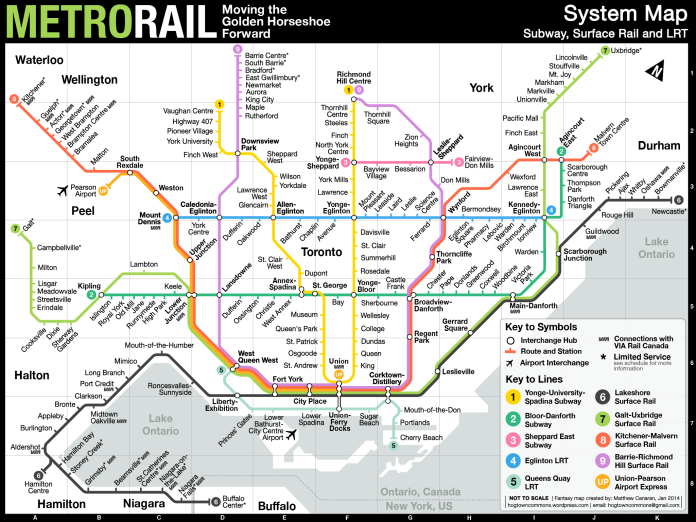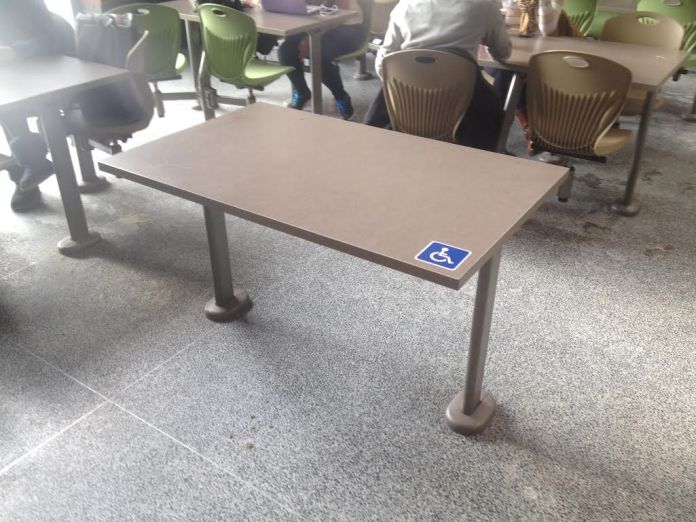Last month, Jennifer Pagliaro of the Toronto Star reported that the revised costs of the Scarborough Subway Extension will be known by City Planning before the next municipal election. Toronto will not release the updated estimate until much later. They say there is simply no opportunity to do so because council will not resume from its summer break until after the election. Critics, however, have pointed out that council may resume from recess if a meeting is called. Some councillors and former officials have noted that Mayor John Tory does not want the numbers released ahead of the municipal election because it may hurt his campaign for re-election.
Next week, Metrolinx will provide an update to its board about proposed new stations for the province’s GO Regional Express Rail plan. Metrolinx has already published an update of its new-station evaluation on their website. Six of the 12 new stations identified in Metrolinx’s update are also stations in Mr. Tory’s signature SmartTrack plan. The Mayor summarized the findings in a tweet on Monday: “The Metrolinx analysis found the overall benefits of SmartTrack substantially outweigh the cost of building the stations. @Metrolinx estimates these stations will generate $4.58 billion in economic & social benefits – billions more than the $1.19 billion needed to build stations.”
Metrolinx deserves credit for publishing its findings, however, the way the figures are presented is misleading. Given his tweet, Mr. Tory did not seem to mind.
First, the numbers Metrolinx released are not at the station level. A sum of the benefits and construction costs were presented for all six stations. If a new station has no value for money, it’s covered up by one that does. We’re told the East Harbour station, championed by First Gulf, will be the catalyst for a second financial district. Metrolinx likely used First Gulf’s employment estimates to project the ridership those jobs might create. Mr. Tory himself may have insisted. Recall, during the 2014 municipal election, Mr. Tory championed development of those First Gulf-owned lands.
Next, the costs presented are not life-cycle costs. Costs for operations, maintenance, staffing and serving the station with trains were not published. The only cost Metrolinx provided was the cost to construct the new stations. Lastly, the monetized benefits ($4.58-billion) are presented for a 60-year period, the presumed life-cycle of the project. It is misleading to allocate the benefits from a project life-cycle to a one-time construction cost of a station, especially if the cost does not include serving the new station with trains.
Understanding life-cycle costs is not a transit-specific concept. Every business (and every family) considers the whole cost when budgeting. It’s not enough for a family to buy a dining table and dishes and expect to eat for the rest of their lives: They know that they’ll have to keep buying food that will be consumed at the table.
For other projects, Metrolinx has compared the life-cycle benefits with the life-cycle costs to understand value for money. This is consistent with international best practice.
Metrolinx must release the costs to operate and serve each of the new stations and the life-cycle benefits and life-cycle costs must be released for each station individually. Governments do not have unlimited funds. Projects that are built, must have good value for money, especially when considering the multibillion-dollar repair backlog for schools, subway-signalling systems, sewers and streets. Many things in our city need fixing. Then there is the Relief Line – a subway – which remains unfunded despite being deemed the No. 1 transit priority by generations of transit executives, planners and politicians, past and present.
Recently, Mr. Tory has become vocal about his support for the the Relief Line. But he still equates its importance with a one-stop subway extension in Scarborough, an ever-morphing SmartTrack and even a tunneled Eglinton West light-rail proposal. All three of these were backed or conceived by Mr. Tory. The fact that he can not talk about the Relief Line without championing his pet projects is telling.
In a city and region starved for transit, it may seem like any new transit is justified. There may be merit in some, or many of Mr. Tory’s transit ideas. But the public deserves to know the details. If politicians sidestep the evidence and make uninformed or special-interest-driven decisions, the broader public pays the price.
We need to know if our elected officials truly have our interests in mind. Metrolinx and City Planning must publish the full costs of all transit plans before this year’s elections, even if people in positions of power prefer otherwise.
Overt political influence over the civil service is unhealthy for democracy. Metrolinx and City Planning must be the apolitical bodies the public expects them to be.



